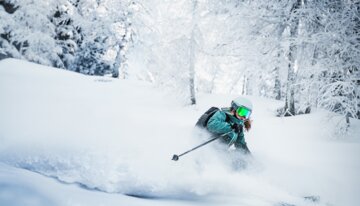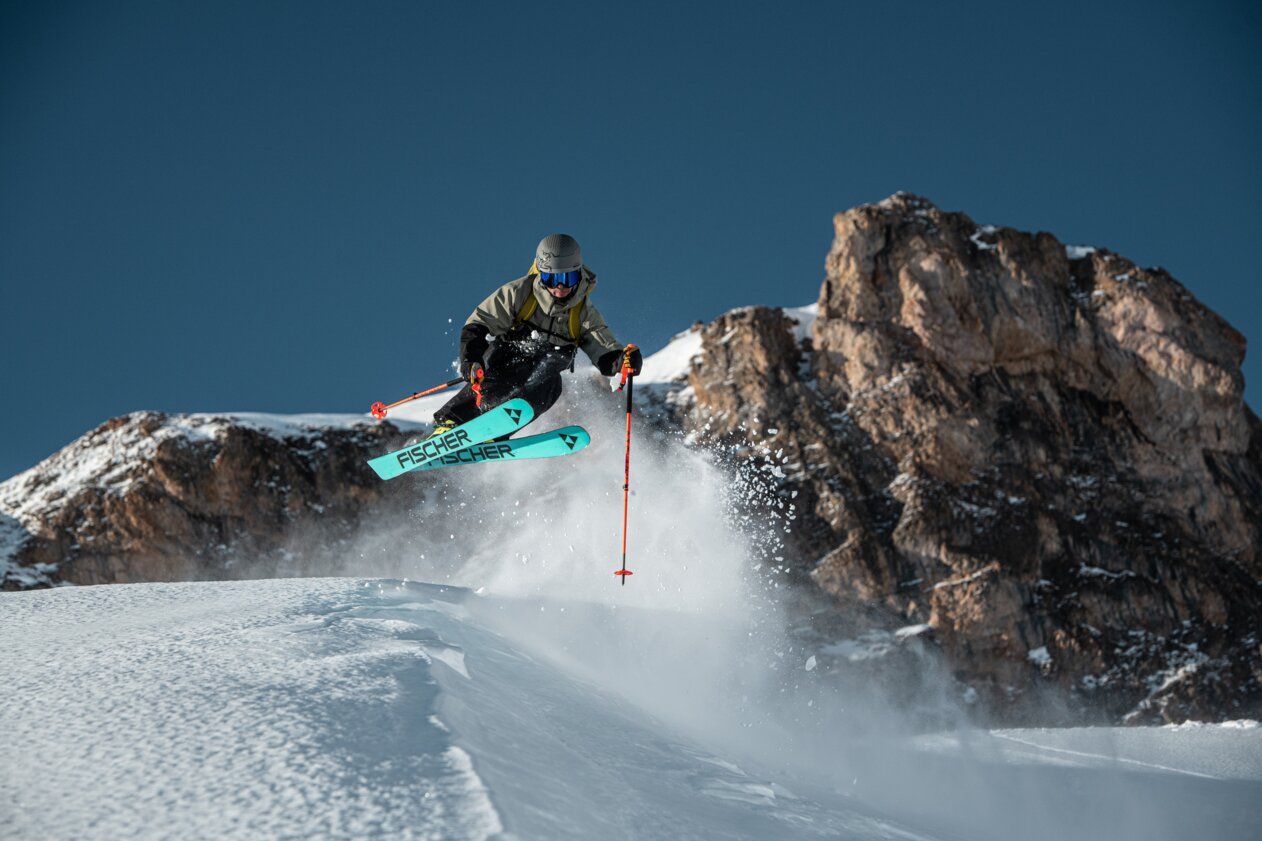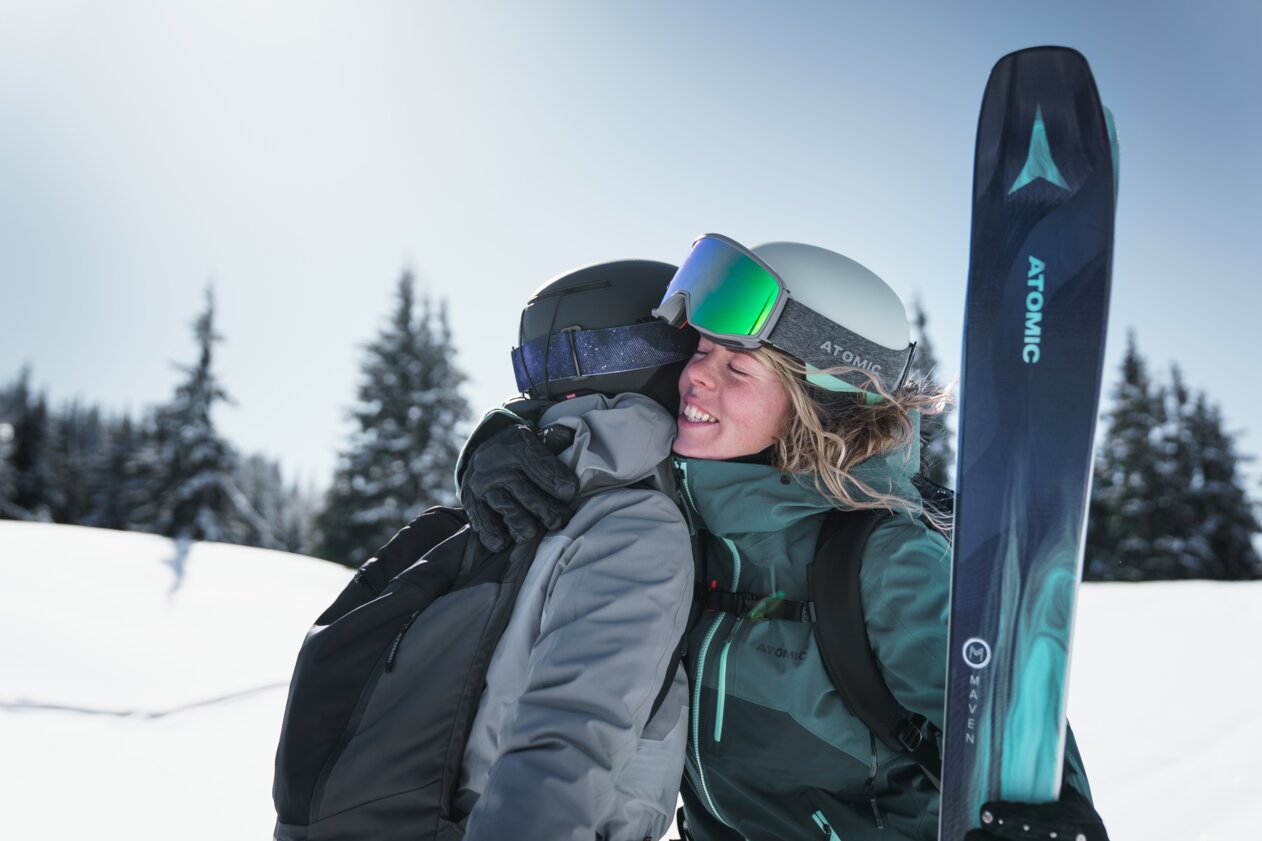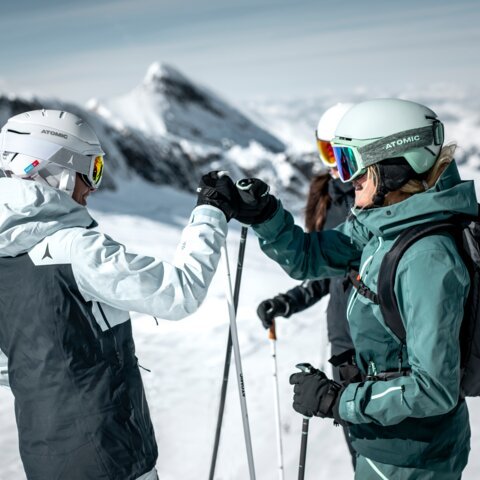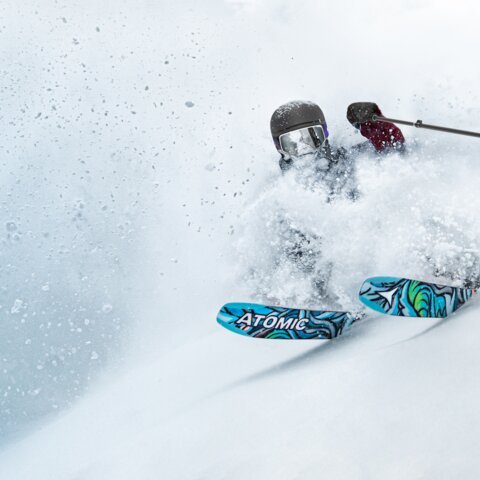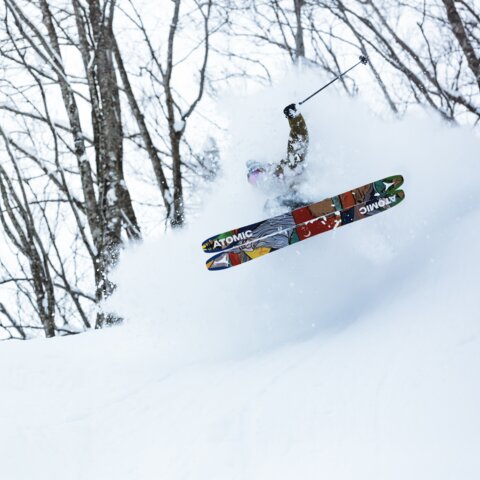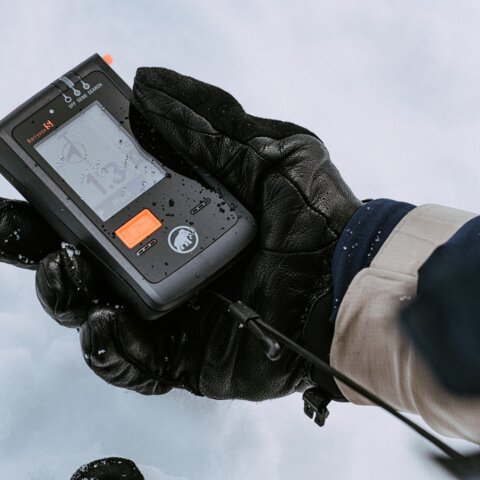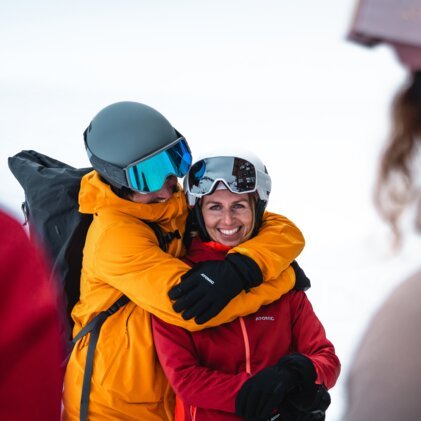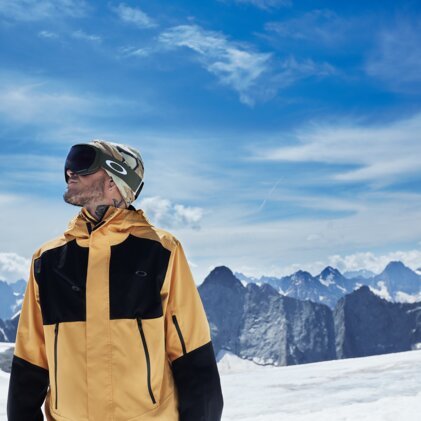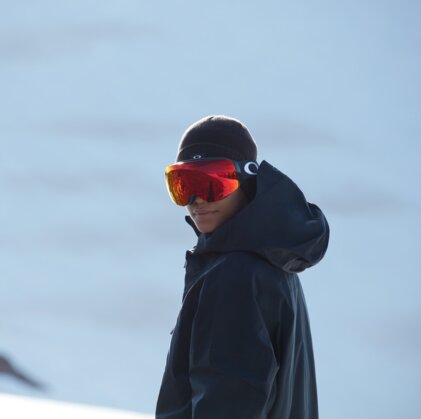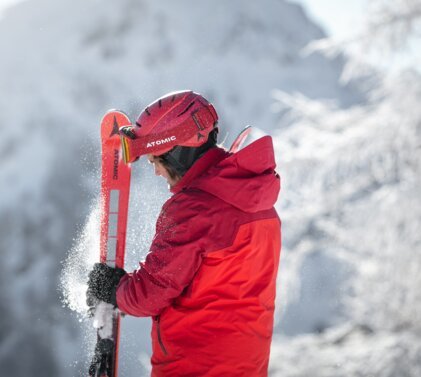Find the right helmet for backcountry skiing – with INTERSPORT Rent
*Advertisement
If you’re looking for optimum safety when freeriding, wear a ski helmet. After all, conditions in the backcountry are particularly rough. Falls are normal in off-piste terrain, just like on groomed slopes. And head injuries are among the most common consequences of skiing accidents.
Because you are aware of this, you have probably come here – to get a freeride ski helmet. On this page, you will find all the information you need to choose a suitable helmet. We have summarised what you need to consider.
The most important facts about freeride ski helmets at a glance
What criteria does a good freeride ski helmet need to fulfil? Which features and technologies are particularly convenient and recommended? To start with, here’s an overview of the relevant facts:
- Standard: The CE-EN1077 labelling indicates that the helmet complies with this European standard. The American equivalent is called ASTM F-2040.
- Safety technology: The highest safety standards are met by helmets with MIPS technology, which additionally minimises the risk of serious head injuries, similar to SPIN (POC), EPS4D or Smart Safety 360° (Salomon).
- Low weight is achieved through certain materials and production methods, e.g. lightweight ABS shell and in-mould process. Particularly lightweight models weigh around 400 g, ski touring helmets are even lighter.
- An integrated ventilation system with waterproof vents promotes optimum air circulation and regulates the head climate.
- A full-face helmet for good visibility even in clouds of kicked-up powder. A visor is rather unusual for deep snow skiing.
- Attachment clip for ski goggles: In contrast to the visor, snow cannot get under the tight-fitting ski goggles.
- Removable or replaceable ear pads help you hear ambient noise, which is especially important when there is a risk of avalanches.
- Removable inner lining: Regular washing is recommended for reasons of hygiene.
- Easy handling: Opening, closing and adjusting should be possible at any time, even with gloves on, e.g. with magnetic buckles or the BOA®-Fit system for pressing and twisting.
- Headlamp holder: especially recommended for ski tourers
Basic knowledge: How is a freeride ski helmet designed?
First of all, it makes sense to look at the design of a ski helmet. Basically, there are two main components:
- Outer shell: mechanical protection; often made of ABS or polycarbonate, because both plastics are light but strong
- Inner shell: absorbs shocks; usually made of EPS (hard) foam
There is also a big difference in the way they are made. Most freeride helmets are made using the in-mould process. This involves fusing a thin outer shell with the inner shell. In-mould helmets are very light and slightly more expensive than their counterparts, the hardshell helmets. They are also characterised by good ventilation.
By comparison: Hardshell helmets have a thicker outer shell that is glued to the inner shell. They provide better protection but are significantly heavier than in-mould ski helmets. Yet another distinction is important in this context:
- Class A: full-shell helmets: They cover the entire head, including the ears, and thus offer better protection.
- Class B: half-shell helmets: They only enclose the upper part of the head – the ears are protected by flexible ear pads.
Even if you are better protected with class A freeride ski helmets – the more popular option among backcountry fans is the half-shell helmet. On the one hand, this may be because these helmets are lighter. On the other hand, earpads allow more ambient noise to penetrate, which can definitely be an advantage in avalanche-prone terrain.
When do I need a new freeride ski helmet?
Experts recommend not wearing a ski helmet for more than three to five years. The more you wear it, the more often you should change it. It is also better to replace it after a fall or if there are visible defects such as cracks.
How much is a good freeride helmet?
Good ski helmets start at around 100 euros. Depending on the materials and technologies used, a freeride helmet can cost several hundred euros.
You can find help on the subject of children’s ski helmets on this page!
Test as many freeride helmets as you like
Do you already know exactly which helmet or equipment you want to rent at the most beautiful freeride ski resorts of Europe and Canada? Then go ahead and take advantage of our convenient online reservations! We will have the desired equipment ready for you at the shop of your choice on the day of your arrival.
